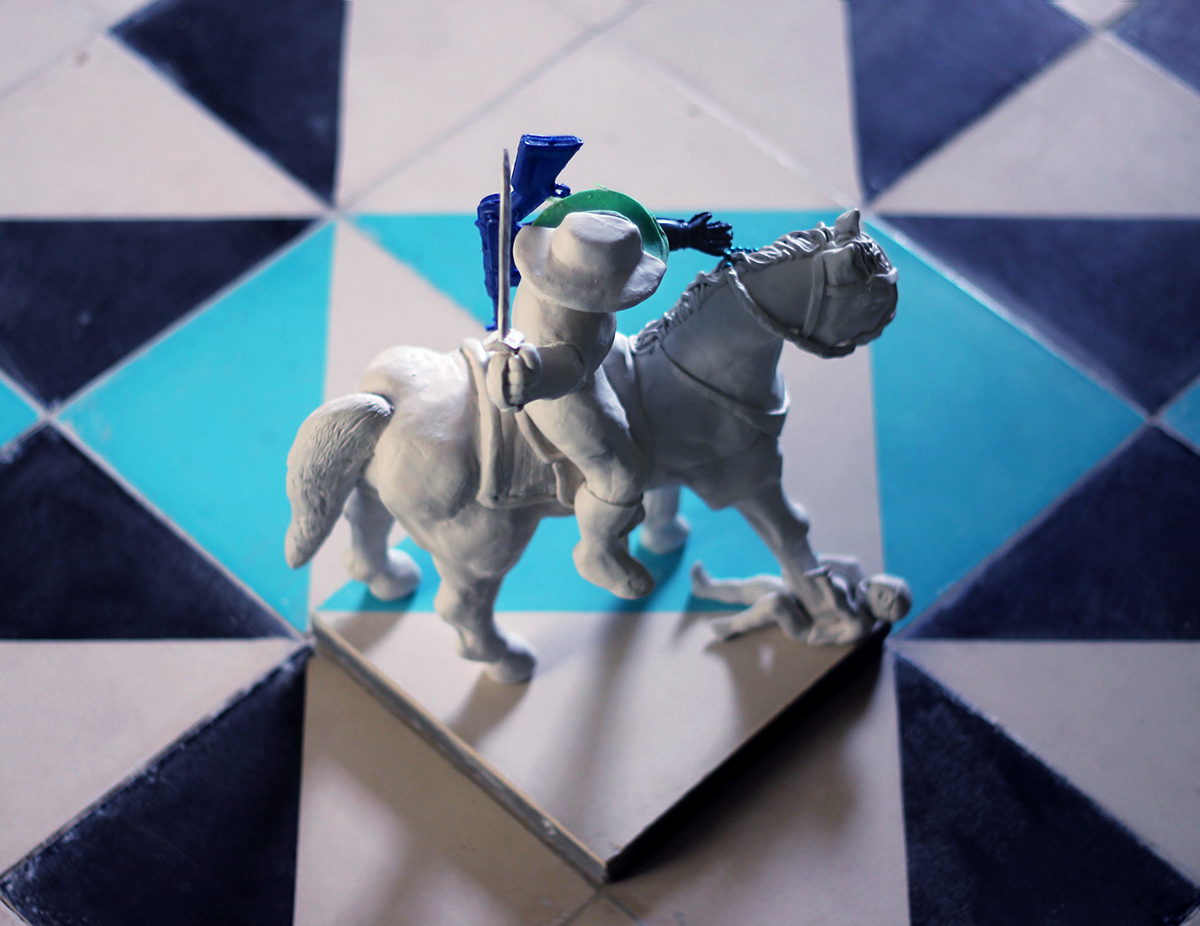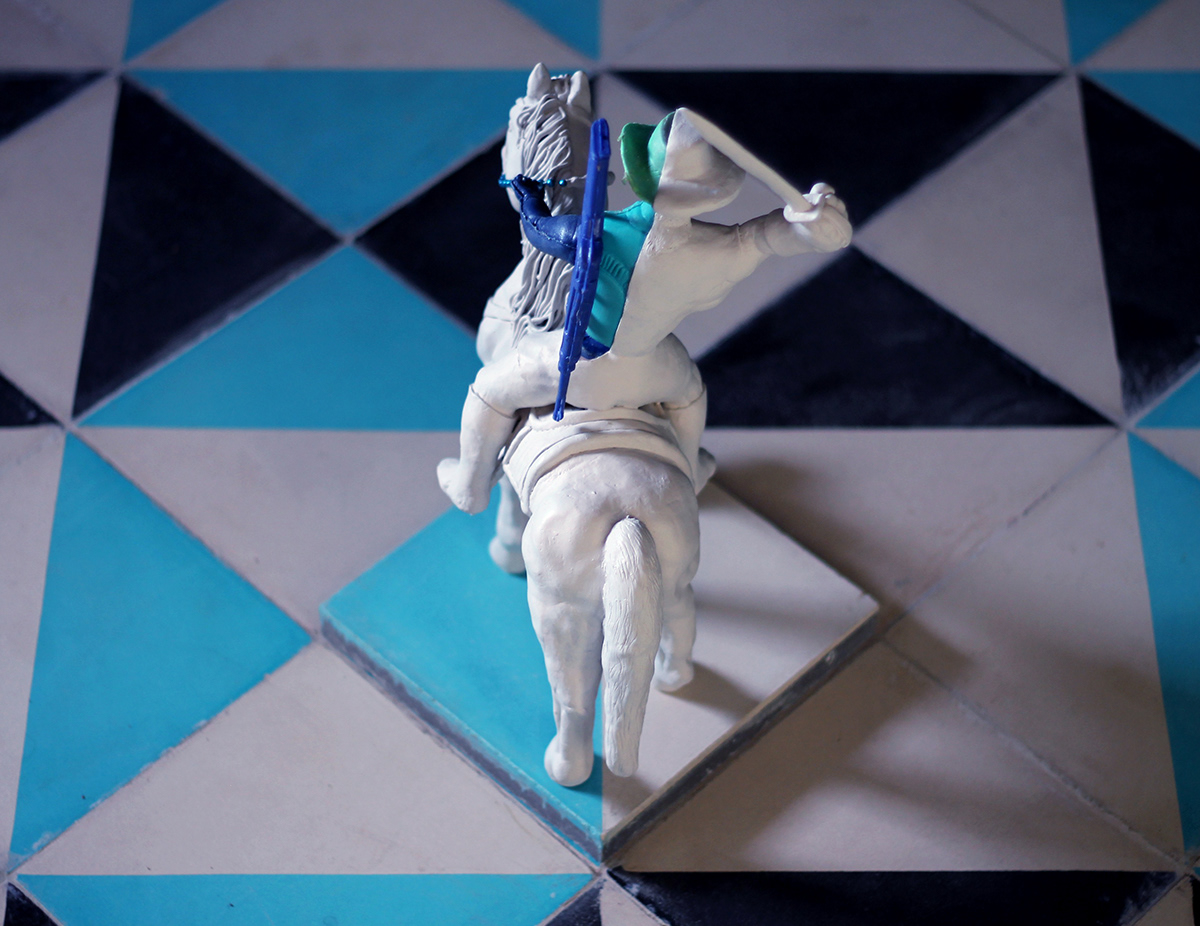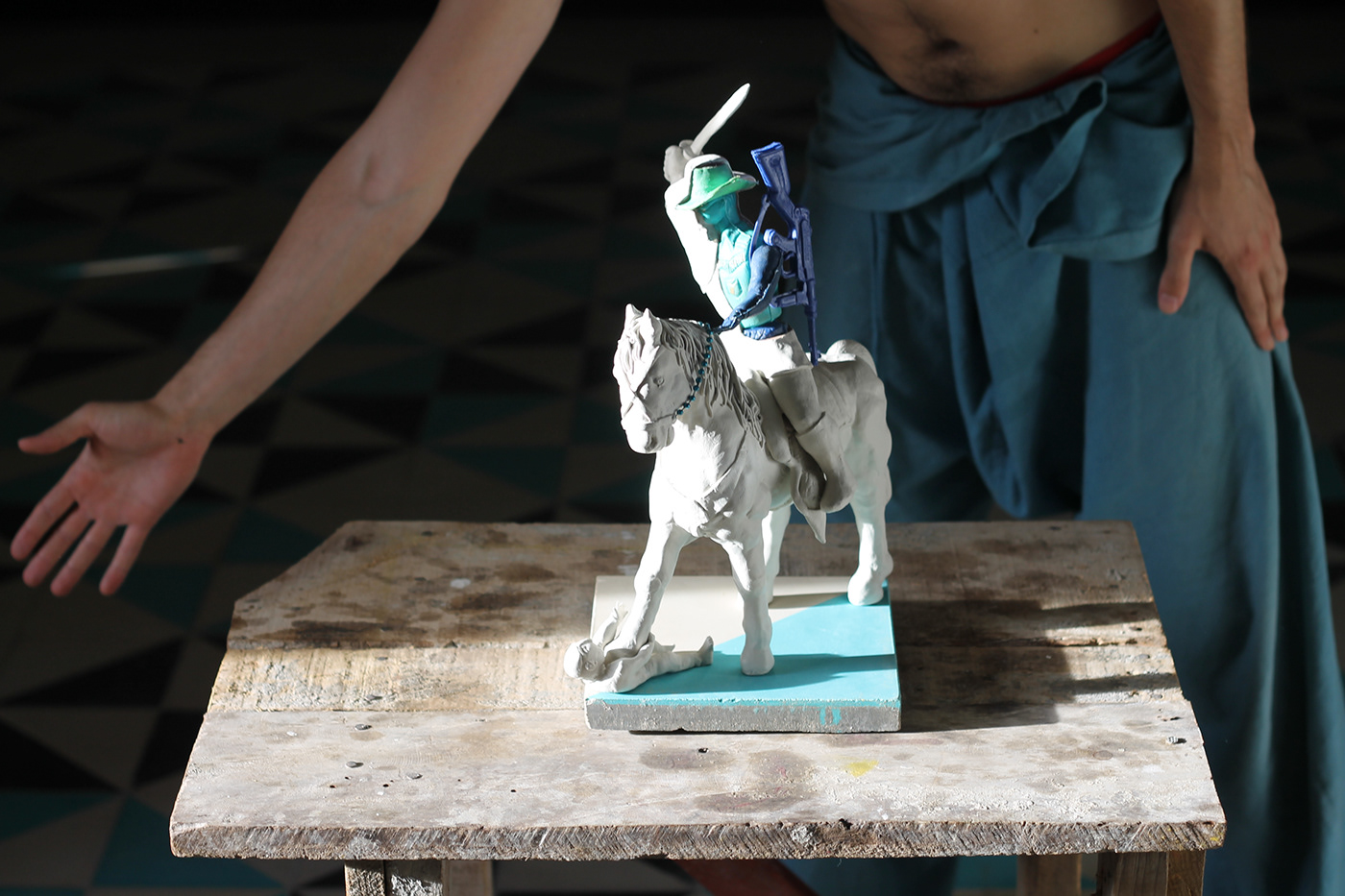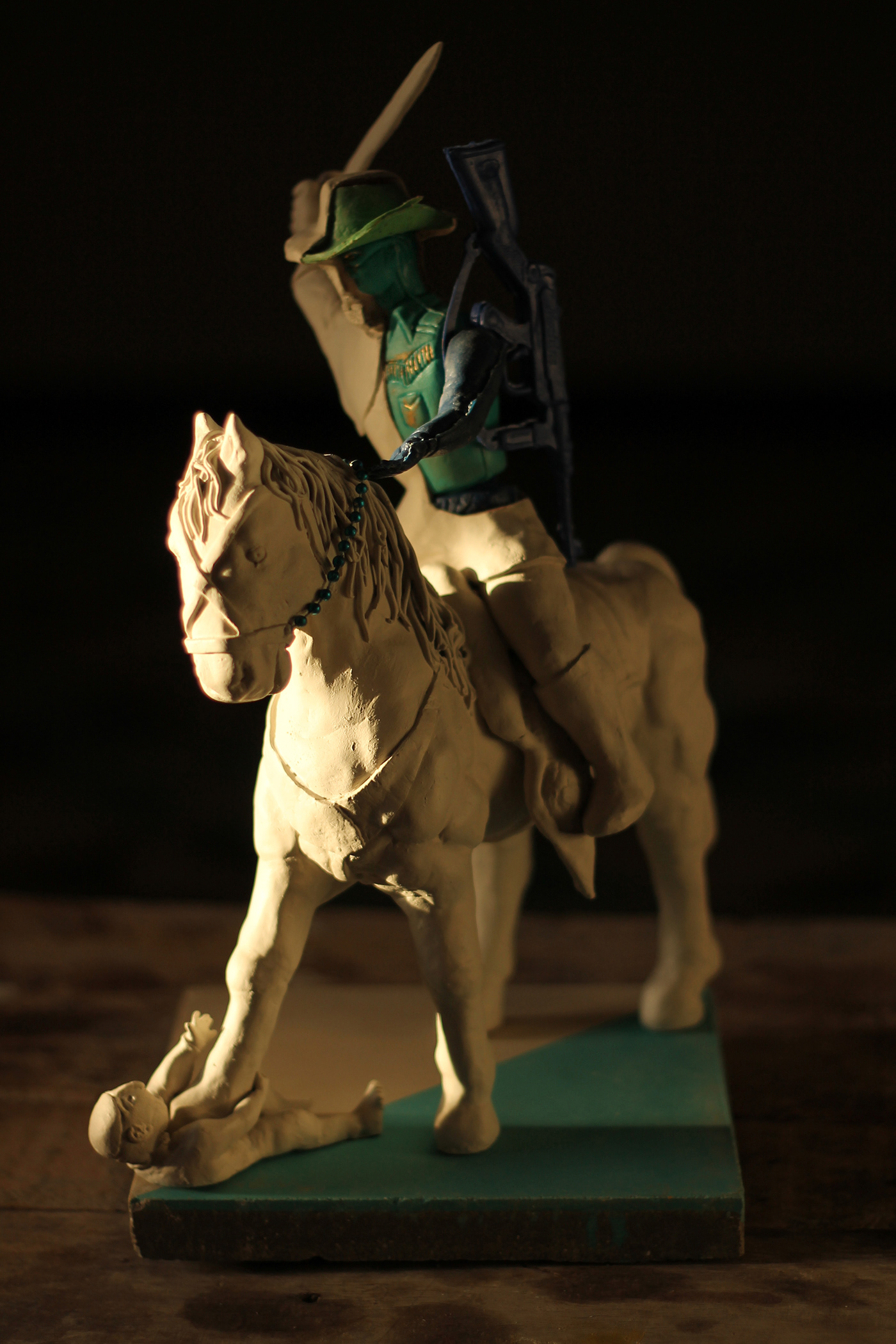
El Juguete Mataindios (The Indian-killer Toy) is a little sculpture (40x30cm approx.) born as the result of my participation in the artist residency RSDNSART Kankabal, organised in June 2015 by Noox Gallery in Yucatán, Mexico. It is made in epoxy clay and uses one of the floor tiles of the residency cabins as pedestal.
The idea came when, visiting the Museo De La Ciudad of Mérida, the capital of Yucatán, two polychromatic wooden statues attracted my attention: the museum named them “Santiago Matamoros (Moor-killer) - XVIII century”, but the little figure dying under the hoof of the knight’s horse didn’t appear to me as a moor at all.
After simple investigation, I discovered the history of Santiago Mataindios (Santiago Indian-killer).
The legend tells that, during the battle of Clavijo, Spain, on the 23rd of May of 884 A.D., the Christian army of Ramiro I of Asturias defeated the muslim forces of Abd al-Rahmān II with the supernatural help of the apostle Santiago. After that episode, the saint, formerly a poor fisherman who then became the first martyr in the history of Christian religion, turned into the patron saint of Spain and was represented as a knight on a white horse, brandishing a sword in his right hand, often a flag in the left one and always stepping on one or more muslims. Six centuries later, during the conquest of America, the saint was again invoked by the Spaniards. This time, his name was updated according to the new enemy to win, becoming Santiago Mataindios, Santiago Indian-killer.
Curious fact, the use of the saint didn’t get obsolete even in modern times, as it’s testified by the painting of Santiago Mataindependentistas (Independentist-killer), wrongly called Matapatriotas, realized in the IXX century and viewable in the Museo Nacional Del Banco Central of Quito (Ecuador).
The most surprising part of the story is that Santiago Apóstol, also known as Santiago El Mayor, who got to America as insignia of the colonising forces, ended, perhaps merging with native daities like the Incas’ god of thunder Illapa, as patron saint of indigenous people and is currently worshipped and celebrated in countless feasts throughout Latin and Central America, every year on the 25th of July.
In my opinion, the discourse about colonialist atrocities and manipulation, even though historically right, falls short in explaining something that seems to me much more related to a sort of veneration of violence itself, as celebration of strength by oppression of the otherness. It affects like a disease whole humankind, and differences of religion, skin color, gender or social background still are mere attributes defining the various manifestations of the relationship victim-oppressor, but not getting to the root of the issue.
That’s why my artwork has been painted just in white, without further connotations, and exhibits on one side its core, one of the most common toys you can find in the markets of the mayan town of Izamal, the nearest village to Kankabal residence. The plastic toy is, by the way, a cowboy, again a well known symbol of the primary power of our age. If the in the case of idol the violence veneration was perpetrated through religion, now it is through entertainment.
Anyway, I hope that, for intellectual honesty, the Museo De La Ciudad of Merida will change some day the label under the two sculptures. Just to call, at least, each thing with its name.



Pictures of the two wooden statues of "Santiago Matamoros" in the Museo De La Ciudad of Mérida.




Stopmotion documenting the creation of El Juguete Mataindios, before and after.










Some frames of the stop motion.






